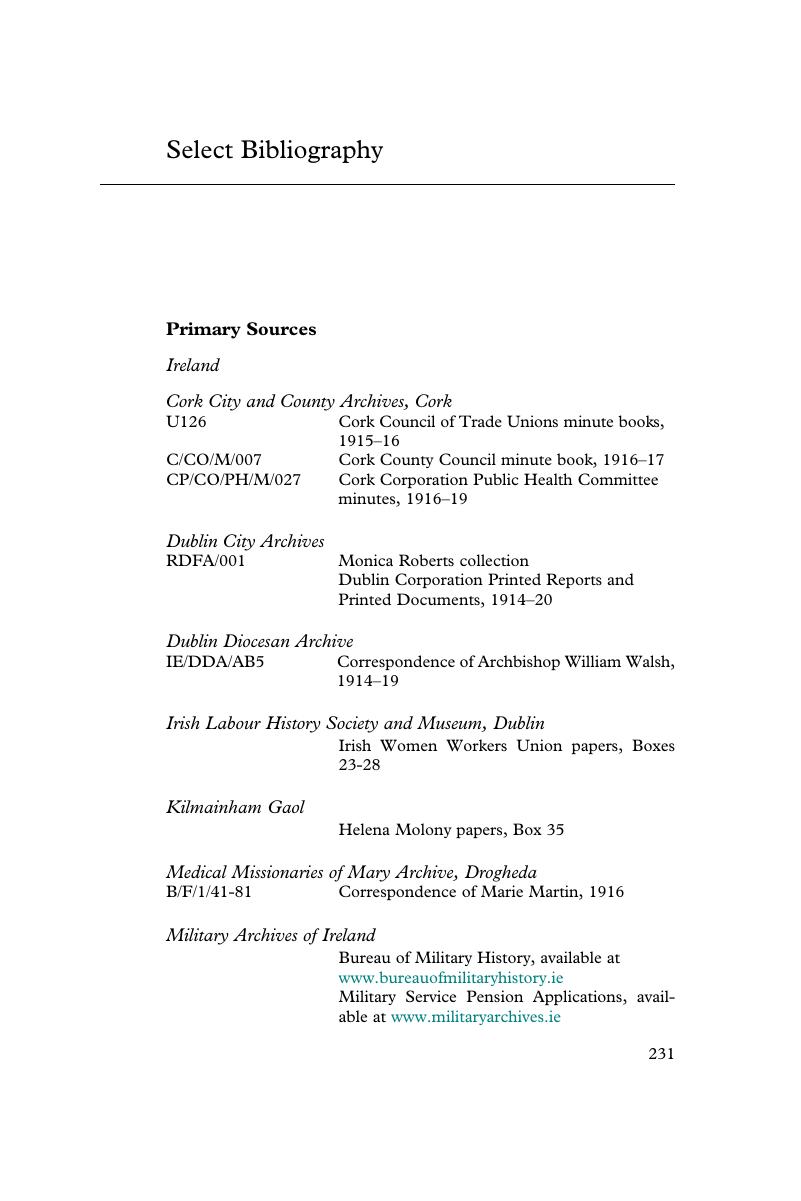Book contents
- Irish Women and the Great War
- Studies in the Social and Cultural History of Modern Warfare
- Irish Women and the Great War
- Copyright page
- Contents
- Tables
- Acknowledgements
- Abbreviations
- Introduction
- 1 Mobilising for the War Effort
- 2 Family, Welfare and Domestic Life
- 3 Social Morality
- 4 Working Lives
- 5 Politicisation
- 6 Demobilisation
- Conclusion
- Select Bibliography
- Index
- References
Select Bibliography
Published online by Cambridge University Press: 15 July 2020
- Irish Women and the Great War
- Studies in the Social and Cultural History of Modern Warfare
- Irish Women and the Great War
- Copyright page
- Contents
- Tables
- Acknowledgements
- Abbreviations
- Introduction
- 1 Mobilising for the War Effort
- 2 Family, Welfare and Domestic Life
- 3 Social Morality
- 4 Working Lives
- 5 Politicisation
- 6 Demobilisation
- Conclusion
- Select Bibliography
- Index
- References
Summary

- Type
- Chapter
- Information
- Irish Women and the Great War , pp. 231 - 250Publisher: Cambridge University PressPrint publication year: 2020



